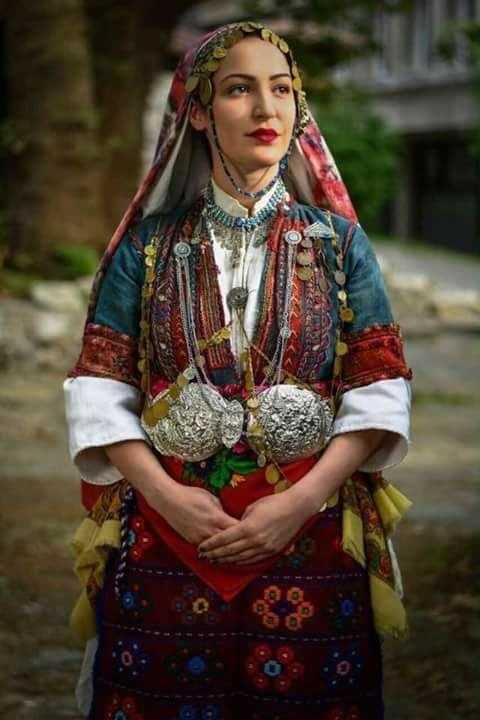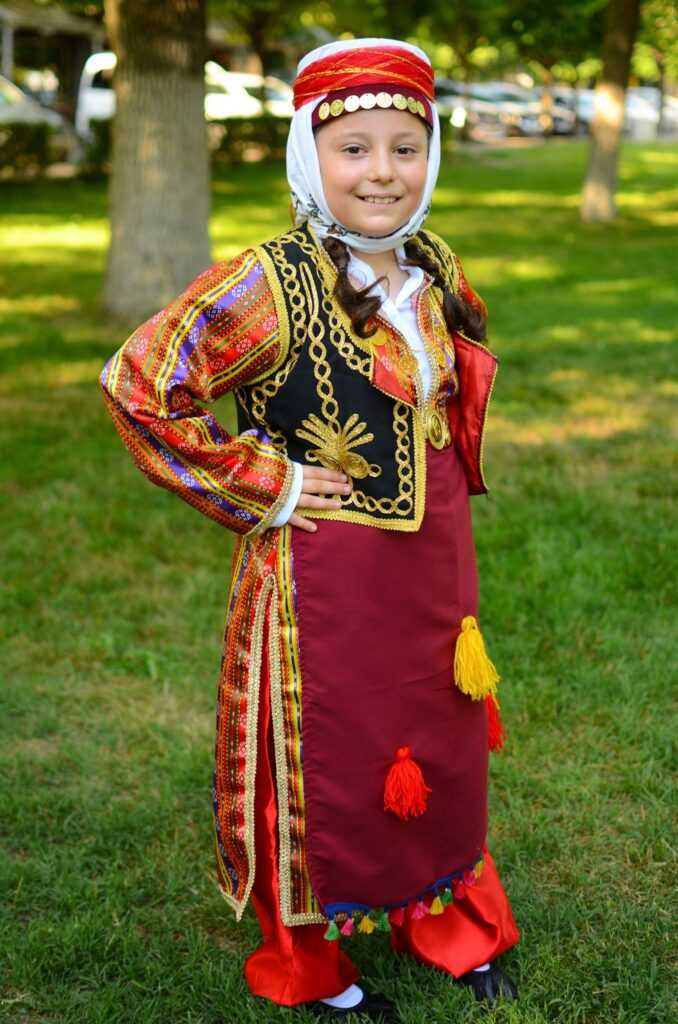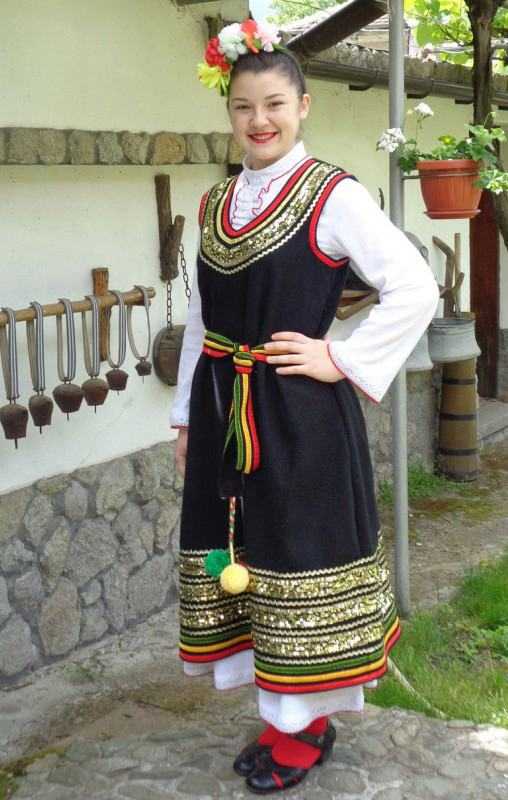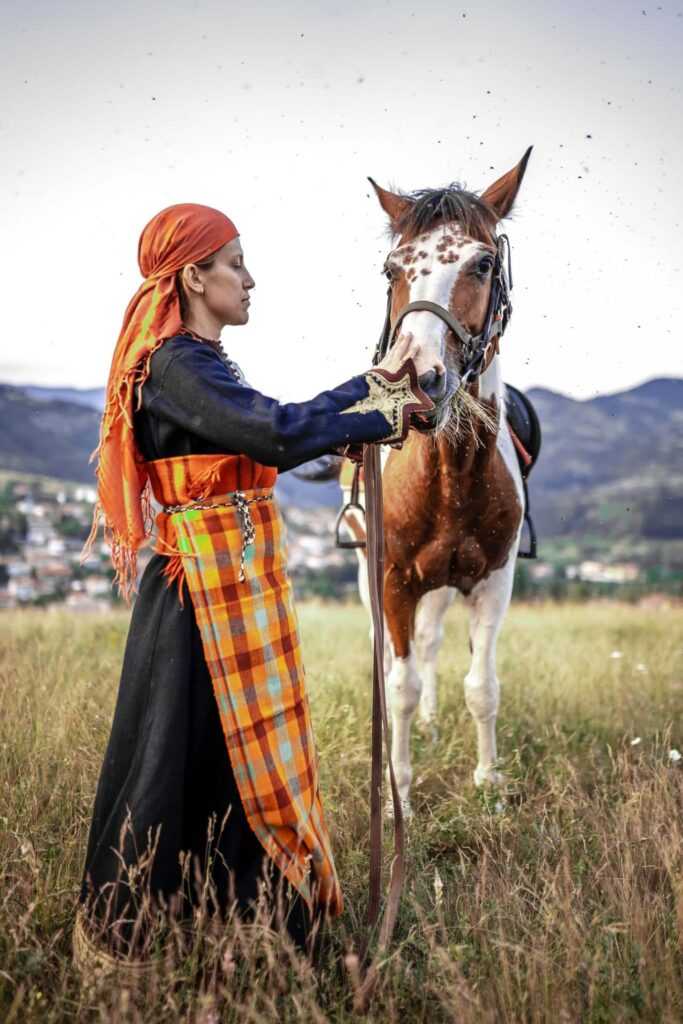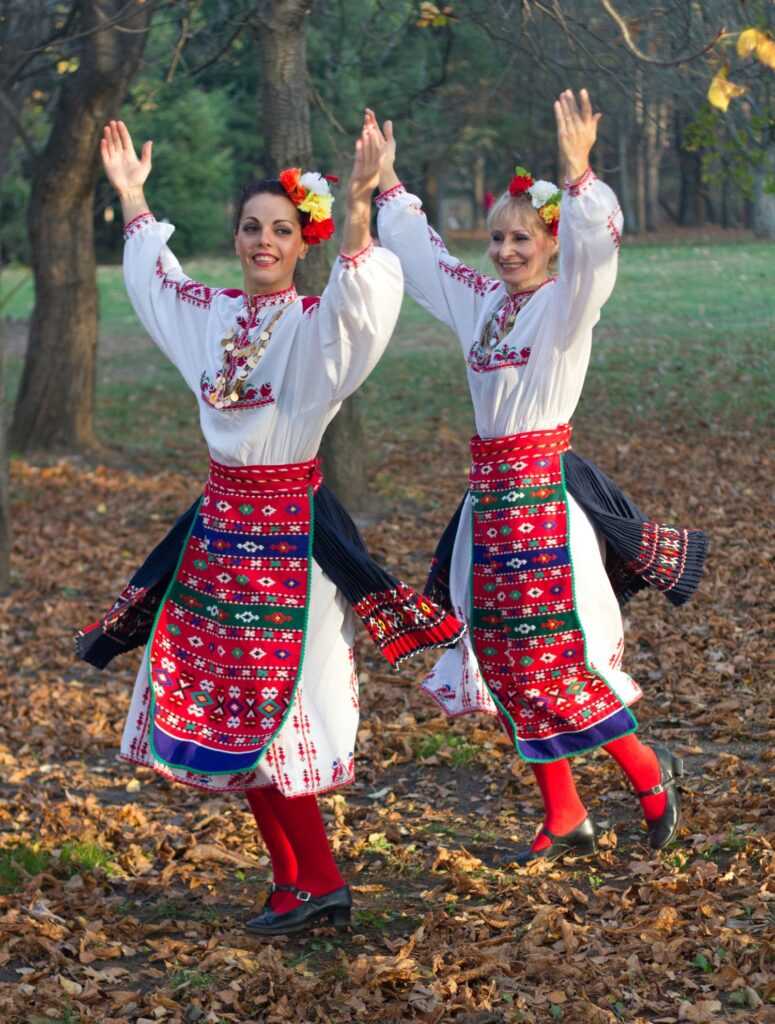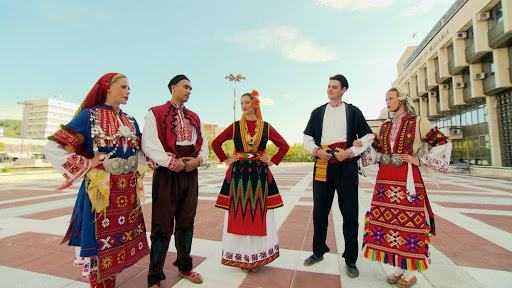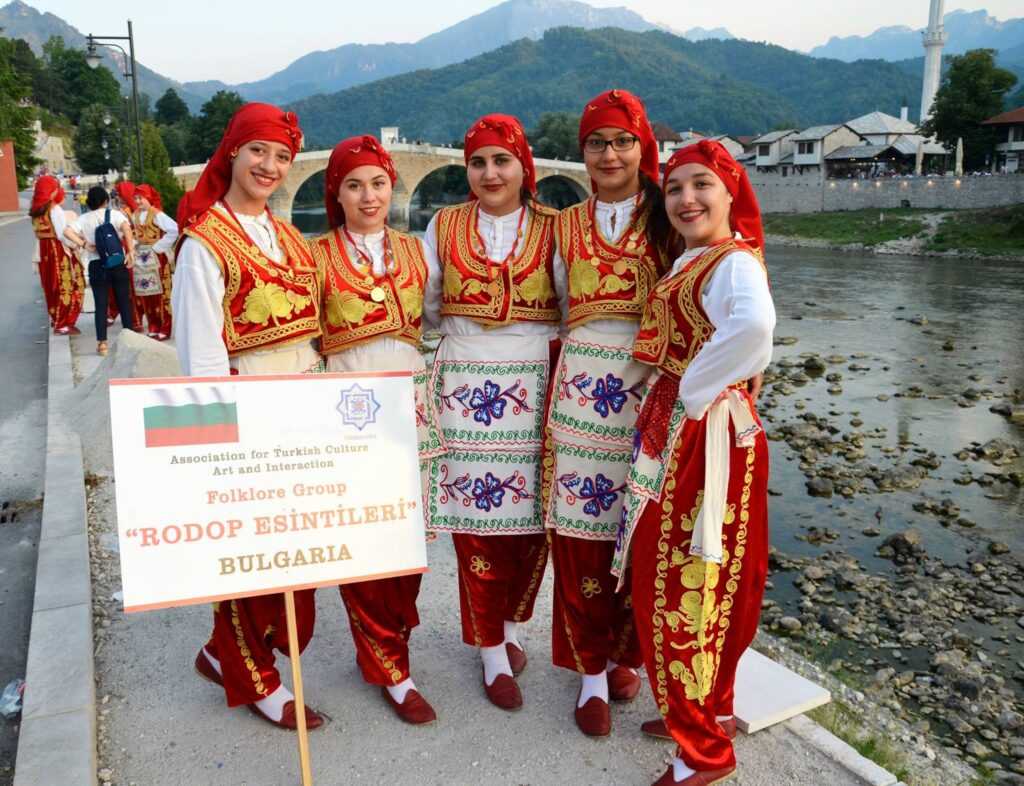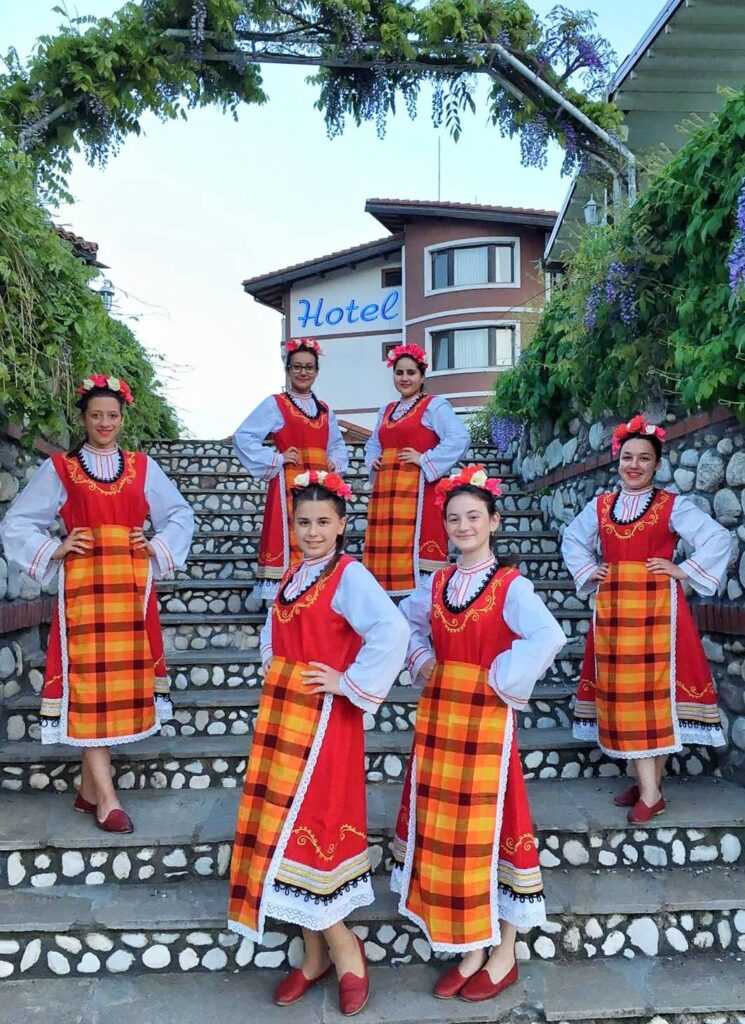Bulgarian folklore is extremely rich. There are 7 folklore regions in Bulgaria – Dobrudzha, Pirin, Rhodope, Severnyashka, Strandzha, Thrace and Shopska, and each folklore region has its own beautiful folk costumes.
Folk costumes are a real treasure, bequeathed to us by our forefathers to remind us of our origins and history. The colorful and beautiful embroideries that are woven into the embroidered shirts, robes and blouses of the Thracian, Shopian, Rhodopean, Northern and Pirin costumes contain symbols of our way of life and culture.
The Dobrudzha national costume carries the elements and embroidery of the harvest and the customs corresponding to this part of the country. The authentic female Dobrudzha costume consists of a red pinafore with embroidery, a long cotton blouse and a black embroidered apron. Characteristic is the headscarf – usually yellow, with long silk fringes, a reference to the golden wheat ears carefully cultivated by the local population.
And the men’s national costume is black. It consists of black trousers, “poturi”, a white cotton shirt which is embroidered on the bosom and is complemented by a woolen red belt.
The Dobrudzha dancer is wearing white socks, and on his head he wears not a cap, but a cloth specific to the region.
The Severnyashka (northern) women’s costume consists of two aprons (front and back), an embroidered apron, a white cotton also embroidered shirt with lace on the sleeves and a black skirt with a woolen embroidered belt. The men’s northern costume consists of a white shirt, black trousers, with narrow and shallow trousers at the top, called either “benevrets” or “cheshires”, a woolen, red belt and an upper embroidered garment with sleeves up to the elbows or without sleeves.
Macedonian women’s costumes are beautiful and quite diverse. They consist of a long, embroidered tunic-like shirt, an apron, an embroidered sukman, a headscarf (in most cases red) and the traditional “tservuli”. They are hung with gold or silver pendants, various elements are embroidered on the cloth according to the ethnographic style, they have flowers and ornaments on their heads. The Macedonian men’s costume is a medium-length shirt, which is accordion-shaped at the end, a red belt, long embroidered white trousers, also an embroidered waistcoat and “kalpak” – for the head.
Folk costumes in the Rhodope folklore region are an integral part of the customs and folklore of the population, accompanying every song and dance. The men’s costume from the Rhodope folklore region is a typical black-clothed folk costume. In the Rhodope version of this costume, traditional for the whole of Bulgaria, there is a shirt and waistcoat with rich embroidery, a red belt, dark “poturi”, again decorated with embroidery and “gaytan” – braid and it is used for decoration. Often, the braid of the gaitans was complex and difficult to make, and accordingly was a real challenge for the sewing skills of the ladies. On the other hand, making their costumes was no “child’s play” either. Among women’s costumes, the most famous is the so-called “sayana” costume. This type of costume is characteristic of the southern and southwestern parts of Bulgaria. Its name comes from the word “saya”, which means a permanent upper garment. In most cases, the saya is open in the front, with different lengths of skirts in different settlements. The length of the sleeves, the materials and the color of the saiya also change according to the region, the season and the celebration itself. In most cases, the saiya is monochromatic – white, black, dark green or red, decorated mostly around the bosom.
The men’s costume belongs to the black dress. It consists of a shirt, an outer garment (vest, anteria, aba), poturi (shalwars, trousers, cheshires), a red belt, a black cap. Abbat is a waist-length woolen garment, without or with a low collar, that fits close to the body. Her sleeves are long and narrow. The potures are broad, with a drooping bottom between the legs, either in front or behind, of black gaitan, and richly ornamented.
Shopski cloths are colorful and very bright, abundant with decorations, braids, embroideries. The presence of pafti – the metal ornaments that are tied around the girls’ waists – is very characteristic. Pafts are made of cast or wrought iron, often painted or decorated with stones and other elements. The women’s costume is full of colors, the decorations are concentrated in the skirts and bosoms, and the sleeves of the costume are mostly long and again covered with folk embroidery.
The costumes of the Turkish ethnic group living in Bulgaria are also rich and varied. The Turkish woman’s clothing is composed of two main parts – shalwars and anteria, sewn from factory fabric, short waistcoats with spectacular shiny decoration. The headscarf is a thin silk headscarf, tied with ends sticking out on one side, from which the hair braided into two thick braids can be seen. Hair is perceived as an important part of a Turkish woman’s appearance. Beautiful hair, according to the aesthetic criteria of the Turkish woman, gives charm to the woman. On her bosom she wears pearl necklaces, and a married woman always displays a string of gold pounds. A “yonluk” or “futa” is stored in front of the shalwars during housework. It is narrow with a horizontal seam and woven ornamentation on the red field with white cotton threads.
The Turkish men’s costume consists of a short white cotton shirt that is tucked into the poturi. They are made of wool, sewn from dark blue or black “aba”, edged with black braid. A short “anteriya” with sleeves is also sewn from the same aba, and a vest is worn over it. At the waist, the outfit is fastened by a long uncolored white belt, which is additionally stocked with a leather belt with a buckle. The feet are shod with knitted white woolen socks and leather shoes. The hair is cut low over the forehead and nape. A “red fes” is placed on the head, which is wrapped with a long “saruk” – a turban.
